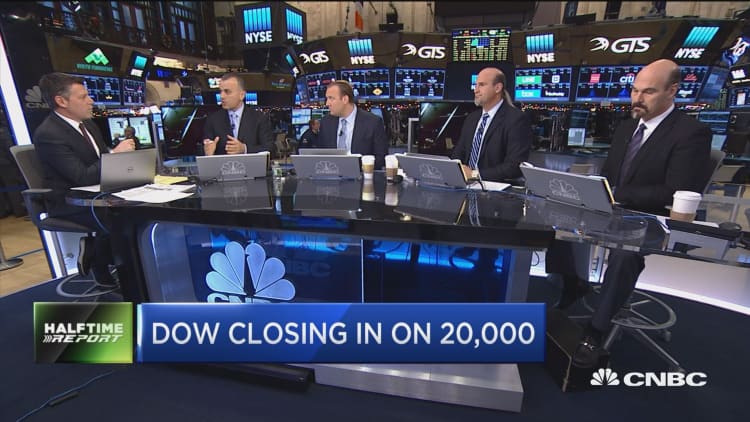
Stocks have surged so quickly in the past few weeks that a gauge of enthusiasm in the Dow Jones industrial average has hit its highest level in 20 years. And for now, some strategists are on the alert for a near-term pullback in the market.
The technical indicator is called the relative strength index, or RSI, and it shows the relative size of gains versus losses for an underlying market index, usually over 14 trading days. Whenever the RSI climbs above a 70 to 75 range that signals the underlying index is getting expensive.
For the Dow, its 14-day RSI rose above 80 for several days this month to hit 87.4 on Tuesday, the highest since the 87.8 level hit on Nov. 25, 1996.
"That indicates to me that there are an overwhelming amount of buyers. The fact that it hasn't hit that mark since 1996 just shows you how aggressive these buyers are being," J.C. Parets, founder of Allstarcharts, said in an email.
"A correction, either through time or price, is certainly warranted," Parets said, referring to a possible 10 percent drop in stocks. He added, however, that "overbought conditions are a positive, not a negative, from any kind of structural perspective."
Robert Sinche, global strategist at Amherst Pierpont Securities, pointed out that late November 1996 was just days before then-Fed Chairman Alan Greenspan gave his famous "irrational exuberance" speech. His Dec. 5 talk of that year discussed whether stocks were getting too expensive and prone to a sharp sell-off.
"RSI is just an indicator there's a lot of optimism, a lot of enthusiasm in markets, which opened up an opportunity for something to go wrong and a case for a correction. The Fed announcement opened up a correction in many markets," Sinche said. The question, he said, is whether the sell-off "persists."
The Dow's relative strength index held above 80 Thursday as stocks resumed their rise following the Dow's worst day in two months Wednesday, when the Federal Reserve surprised markets by forecasting three interest rate hikes next year.

It's worth noting, of course, that after the late 1996 high in the Dow technical indicator and Greenspan's "irrational exuberance" comment, the Dow continued to rally for the next three quarters before pausing.
"The strongest markets can stay overbought for long periods of time; thus, we have been treating the stretched indicator as a condition, not a sickness, for much of this rally," Frank Cappelleri, executive director at Instinet, said in an email.
U.S. stocks rallied to all-time highs on hopes of promised tax cuts, infrastructure spending and deregulation after President-elect Donald Trump won the election. The 30-stock Dow Jones index has leaped more than 8.5 percent since then, outperforming the S&P 500 and Nasdaq composite.
"The most probable scenario now is the market continues going up, but at a slower pace," said Sameer Samana, global quantitative strategist at Wells Fargo Investment Institute.
Strategists' expectations for stock performance next year vary widely, he said, because "for the first time in a few years, we've got a variety of things that could do really well for stocks or disappoint that could lead to a less rosy outcome."


